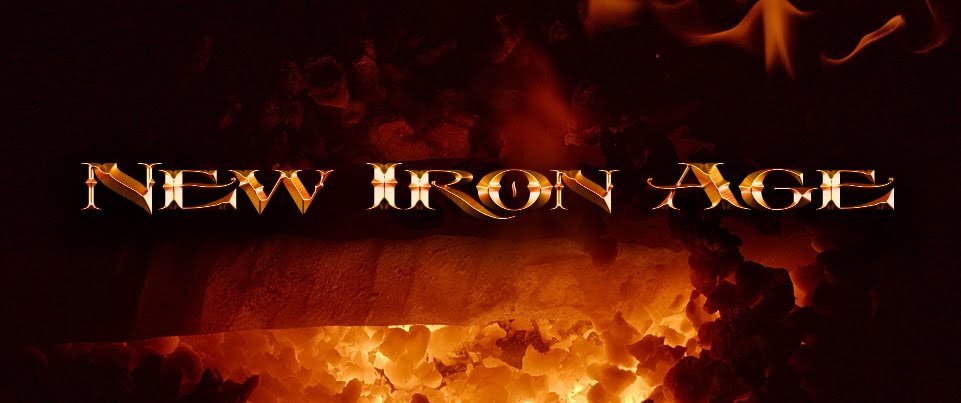This
is very much a Sword & Sorcery movie that bucks the standard by
setting itself within the modern world, pushing the question of
whether an S&S story has to be set in a fantasy world. I
will maintain that this movie is set in a fantasy world, it’s
just one that superficially resembles our own.
The
movie opens in a poorly-defined “dark ages” which we can gather
from later context is supposed to be sometime in the 1200s. Humanity
is at war with an elder race called “Hexen” - which is a Germanic
word for “witch”, though we are given zero indications where this
all is supposed to be happening. Vin Diesel stars as Kaulder –
which is not a real name, and the cognate “Calder” is a Scottish
name. So this is just some vague “Europe in the dark ages”.
Anyway,
we see the big showdown between Kaulder, his companions, and the
Hexen, or witches they came to fight. The evil tree that serves as
the lair of the Witch Queen looks amazing, and the digital painters
do a great job with the backgrounds, giving it a really evocative
look. The battle is a bit confusing, but in the end it seems like
Kaulder is the sole survivor, who stabs the Witch Queen and she
curses him with immortality as she dies. We later find that none of
this is true, but that’s later.
Then
the movie cuts to modern New York, where Kaulder has become a figure
that would be very familiar to fans of the pulp heroes of the 30s.
Vin always kind of plays the same character in his starring roles,
but this time it works. Kaulder is like other pulp luminaries like
Doc Savage or the Spider, as he is always the coolest, toughest,
smartest guy in the room. He’s rich, lives in a cool apartment,
and all the chicks want him.
Kaulder
has spent 800 years as the “or else” of a human brotherhood that
made a truce with the witches, and now, so long as they behave, he
lets them go about their business. But of course there are always
witches who say “fuck that” and start trouble, so Kaulder always
has lots of opportunities to stab people with his flaming sword.
The
look of the movie is pretty good, even if some of the CGI is
iffy-looking. The sets they built and the locations used range from
good to great, and the cinematography is excellent. The cast is
solid, with Micheal Caine, Elijah Wood, and Rose Leslie on hand.
Even if Caine is kind of phoning it in, he lends dignity to the
proceedings, and Leslie is quite good as the gothy witch girl Chloe,
who kind of becomes Kaulder’s sidekick.
The
handling of magic in the plot is varied and imaginative, with witches
using magic stones, runes, powders, herbs, incantations, and other
methods that all look cool and have their own effects. It’s a bit
too complex to work completely in a movie, when you don’t have time
to really lay out the rules very well, but I appreciate that they did
more than just have them throw CGI lights at one another, and the
magic has some echoes of real-world witchcraft to give it texture.
Magic is also depicted as being an inborn power, a connection to a
vast and dangerous force that is inevitably dangerous to humans.
Overall,
it’s a really fun ride of pure pulp entertainment. It’s doing
what it wants to do, and nothing else, and so if you go in expecting
something besides a pulpy adventure, you will probably be
disappointed. If you are in the right mindset, however, you will
have a good time. It wasn’t that well reviewed, and did rather
poorly financially, which is a shame, as this kind of character
always works best as a serial.
The
Last Witch Hunter certainly fulfills some of the criteria of
Sword & Sorcery. Kaulder is definitely in the mold of an S&S
hero, and he is not a black and white, moral character. He’s
driven by revenge for his slain family, but also has an ambiguous
relationship with both his ostensible foes and the people he serves.
Magic is shown as dangerous and unknowable – an inhuman power that
only witches can use. The theme of man fighting for survival against
a prehuman race is very much in the tradition of Howard and Moorcock,
and the idea of a secret war carried on against a hidden enemy for
centuries has echoes of “The Shadow Kingdom” and similar pulp
tales.
The
world-spanning stakes and modern setting are the elements least
compatible with S&S, and there could definitely be more
straight-up violence in the movie, but overall, this is a film that
Sword & Sorcery fans should find a lot of good stuff in, and I
have hopes it will find a niche as a cult classic down the line.




